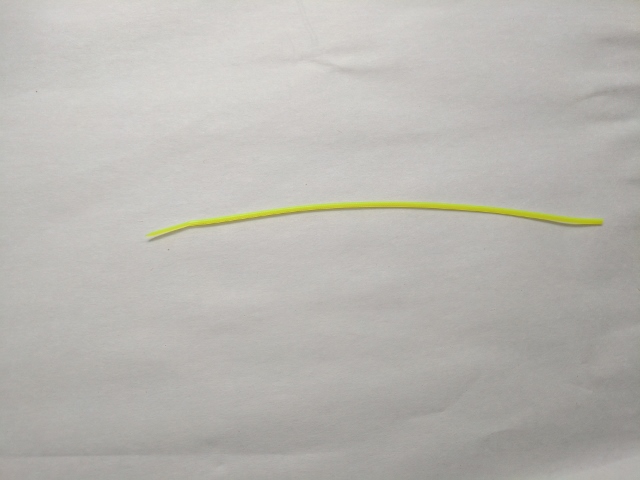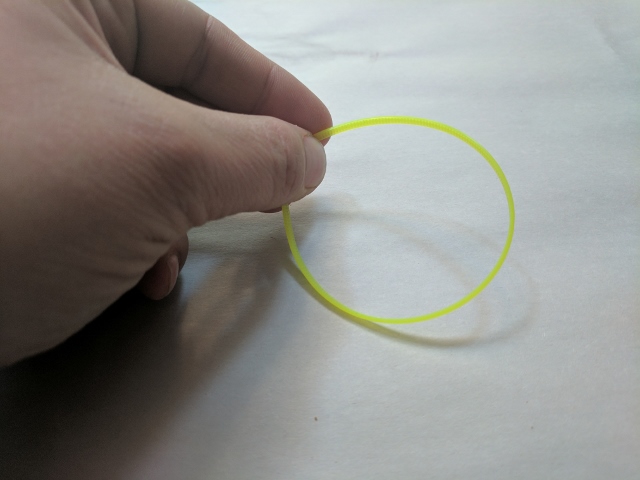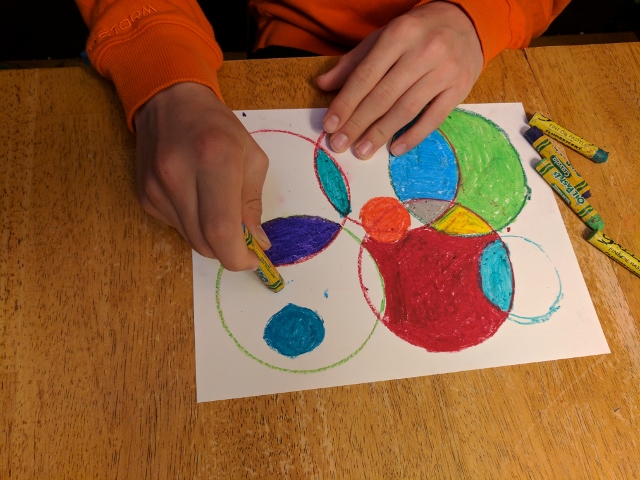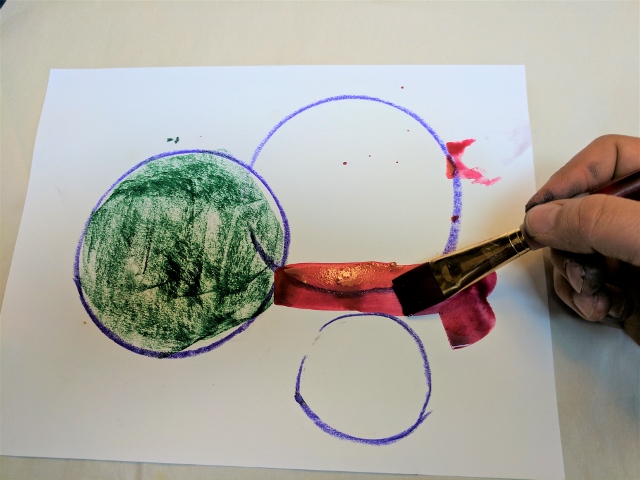Students will use a single shape to create an artistic composition inspired by Kandinsky and Delauney. Recommended for Kindergarten classes.
Shape: a flat figure created within joined lines.
Circle: a round figure with all sides the same distance from the center.
Wassily Kandinsky: (1866-1944) Wassily Kandinsky was a Russian Painter. His parents were musicians and he played the piano and cello. He went to law school and became a teacher of law. At age 30 he decided to become an artist and went to art school. A pioneer of abstract modern art and influenced many future artists, he loved to use shapes in his artwork, especially squares, triangles and circles. Kandinsky felt that he could convey feelings and music through his paintings. He was a synesthete which means that he could hear colors and see sounds. He named many of his artworks like they were songs or musical works using such names as “Composition” and “Improvisation.”
Robert Delauney: (1885-1941) Robert Delauney was a French painter. Raised by his uncle and aunt for most of his childhood, he apprenticed two years to a theatrical designer and painted sets for the theater. After that time, he began to paint. He loved brilliant colors and geometric designs. In school, Robert would often put the lid up on his desk and paint with watercolors instead of listening to his teacher.
Sonia Delauney: (1885-1979) Sonia Delauney was a Russian-born multi-disciplined artist. At her first one-person show she was introduced to several artists. One of them was Robert Delaunay whom she later married. Both Robert and Sonia were very interested in color and how colors reacted when placed next to each other. Sonia made a patchwork quilt for her son, Charlie, and was fascinated by how the strips of colors worked together. She began to experiment with this idea using many creative outlets. She designed her own textiles, made costumes and designed furniture using this concept. She even had her own boutique and her designs were sold worldwide.
Collect lids and cups of various sizes before this lesson (kids love bringing in usable items like this from home for special projects).
Use stencils cut from heavy cardstock or tag board if lids are not available.
Cover desks with newspaper or scrap paper so the students can paint to the edge of their page.


Ask students what they notice about the artwork. How did the artist use circles? Where did they place them? Why do you think they put them there? Does it feel like the circles are still or moving? (There are no right or wrong answers.)
Demonstrate tracing one of the lids by holding down the lid with one or two fingers of one hand and tracing around the circle with the other hand.

Pass out the paper. The students will trace lids and cups of various sized circles with oil pastels. The circles may overlap, go off the edge of the paper, be inside of another circle (concentric), or be in any composition the student desires.
The circles can be colored in with desired colors using oil pastels.


.jpg)
Students create a painting using circles of various shapes and sizes.
Students can answer the question: What is the difference between a circle and and line?
Ask students to make a small circle shape using their hands. Ask them to make a large circle shape using their arms.
Lesson written by Rachelle Roberts.
"Kandinsky, Wassily." WebMuseum: Kandinsky, Wassily. N.p., n.d. Web. 30 Mar. 2017.
"Art History and Artists." Ducksters Educational Site. N.p., n.d. Web. 30 Mar. 2017.
Alley, Ronald. "Robert Delaunay (1885-1941)." Tate. Tate Modern, n.d. Web. 31 Mar. 2017. See also WassilyKandinsky.net.
"Robert Delaunay Biography, Art, and Analysis of Works." The Art Story. The Art Story, Modern Art Insight, n.d. Web. 30 Mar. 2017.
"Who is Sonia Delaunay?" Tate. Tate Modern, 9 Apr. 2015. Web. 31 Mar. 2017.
"Sonia Delaunay Biography, Art, and Analysis of Works." The Art Story. The Art Story, Modern Art Insight, n.d. Web. 31 Mar. 2017.
21st Century Thinking Skills
Decision Making: Choosing from alternatives. In this lesson children choose from a variety of circle sizes to create their own unique piece of art. They also choose a variety of different colors to suite their artistic style.
Cause and Effect: Recognizing actions and their reactions. Children will experiment with how hard to press the oil pastel to get a more or less vibrant color. Children will experiment with reloading their paint brush in the paint to get a more or less vibrant color.
WA State Learning Standards
(VA:Cr1.1.K) a. Engage in exploration and imaginative play with materials.
(VA:Cr2.1.K) a. Through experimentation, build skills in various media and approaches to art-making. Children create an artwork with the theme of circles using oil pastels.
(VA:Re7.2.K) a. Describe what an image represents. Students look at artwork by Wassily Kandinsky, Robert Delaunay, and Sonia Delaunay and respond to artwork.
Arts Integration Opportunities
Math: Counting: students can count the number of circles in their art and write the number. Subtraction: ask the children to cover up one of their circle, have them re-count their circles and write the new number.
Please note: These lesson plans are intended for non-profit use only. Use of these plans for commercial purposes should give attribution to the Issaquah Schools Foundation and be accompanied by a nominal donation at www.isfdn.org/donate. Thank you.
Fueling Success for Every Student, Every School